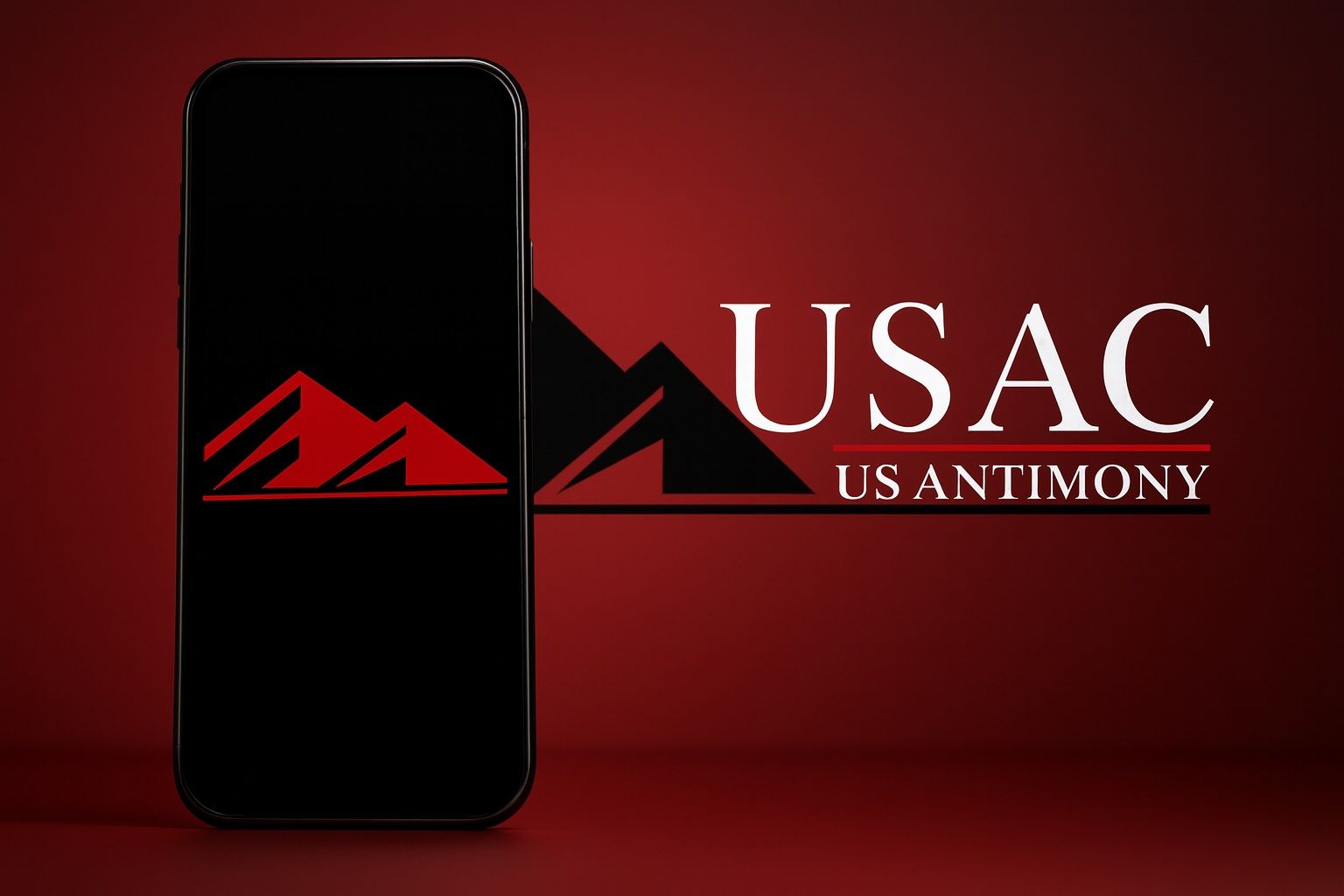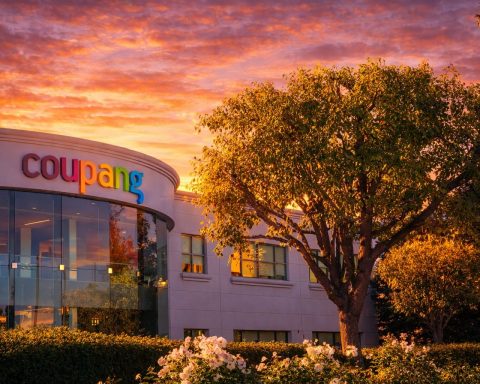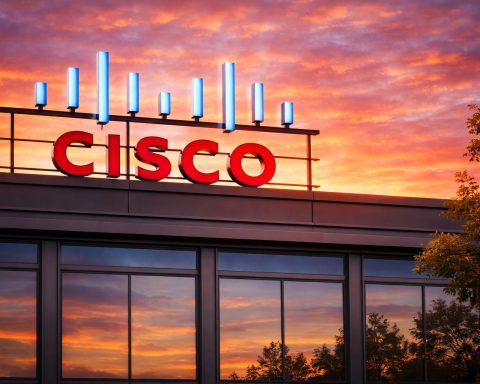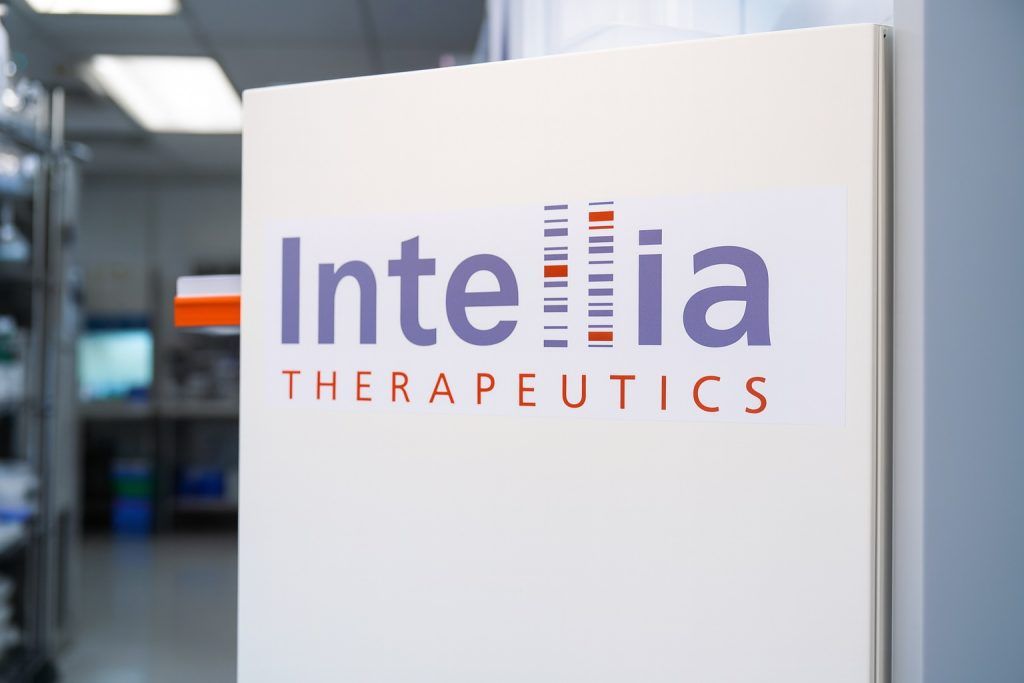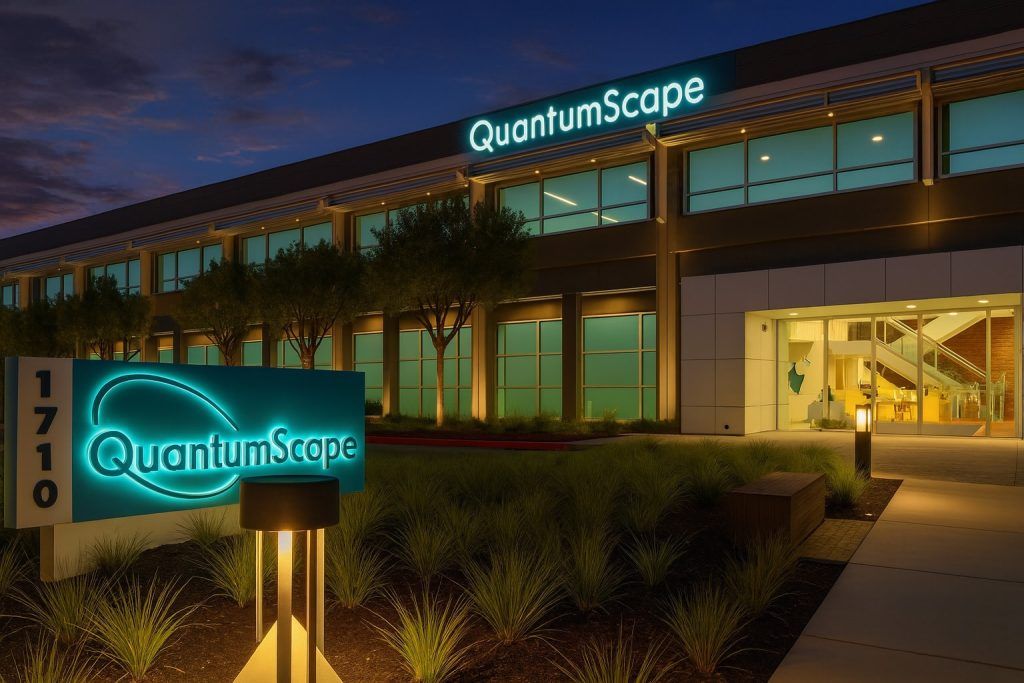- Explosive Rally: United States Antimony Corp (NYSE: UAMY) shares have surged from under $1 in September to as high as $19.71 this month after winning a $245 million Pentagon contract to supply antimony for the U.S. defense stockpile [1]. The stock spiked over +1,400% year-to-date, peaking mid-October, before pulling back to around the $10–12 range amid extreme volatility [2] [3].
- Defense Deal Catalysts: On Sept. 23, UAMY secured a sole-source, 5-year contract (up to $245M) with the U.S. Defense Logistics Agency to provide antimony metal ingots for the National Defense Stockpile [4]. CEO Gary Evans called it “incredibly meaningful… to play such a strategic role in strengthening our nation’s defense readiness” [5]. The first $10 million delivery order (315,000 lbs) was issued in late September [6], and management raised its 2025 revenue guidance to ~$50M (from ~$17.5M in H1 2025) with $100M targeted in 2026 [7].
- Critical Mineral Crunch:Antimony – used in batteries, ammunition, and flame retardants – is designated a U.S. critical mineral [8]. China historically supplied ~80% of U.S. antimony [9], but Beijing’s export ban in 2024 and ongoing curbs have left “no current U.S. sources” of mined antimony [10] [11]. Prices of antimony oxide jumped ~70% this year amid supply squeezes [12]. UAMY operates America’s only antimony smelters (Montana and Mexico) [13], making it a linchpin as Washington races to secure domestic supply chains.
- Expansion and Funding: UAMY quickly raised ~$51 million in October via two equity offerings – one at $7.50/share on Oct 6 and another at $10.51/share on Oct 10 [14]. These placements, done at minimal discount to market, underscore strong investor demand [15]. Proceeds are earmarked for building inventory, expanding output (e.g. upgrading its Mexico smelter), and acquiring ore feed through new mining leases [16]. In fact, U.S. Forest Service just granted UAMY permits for 35,000+ acres in Alaska to develop antimony sources [17] – a major step since currently no active U.S. antimony mine exists [18].
- Analyst Views & Valuation: Wall Street is cautiously optimistic. Several analysts rate UAMY a “Buy,” but their 12-month price targets (~$8–$9) sit below the recent trading price [19]. Valuation models flag that the stock’s fundamentals haven’t caught up: Simply Wall St. estimates a fair value around $7.50/share [20], and UAMY’s forward P/E remains extremely high (>100) given its still modest earnings [21]. The stock’s hyperbolic run-up – with frequent 10–20% daily swings – has prompted comparisons to a meme-stock rally [22]. Even CNBC’s Jim Cramer warned investors to “take profits” on overextended rare-earth and critical mineral plays, noting UAMY’s jump this year resembled speculative “meme” behavior rather than commodity fundamentals [23].
UAMY Stock Rollercoaster Ride in Late 2025
United States Antimony’s stock has been on a wild rollercoaster through October. The tiny miner’s shares, which traded below $1 as recently as mid-September, exploded into the double-digits after the Pentagon contract news hit [24] [25]. In the frenzy, UAMY surged to an intraday high of $19.71 on Oct. 14 (an all-time high) before sharp profit-taking set in [26]. By Oct. 24 the stock closed at $12.01 [27], and it continued to swing dramatically. In Monday trading on Oct. 27, UAMY plunged about 20% by midday to ~$9.50 [28], reflecting the extreme volatility of this niche critical-minerals play. Despite the pullback, the stock remains up over 800–900% year-to-date [29] – a staggering gain that highlights both the market’s excitement and the frothy risks involved.
Such whipsaw moves have been accompanied by trading volumes normally unheard of for UAMY. On Oct. 13, over 30–45 million shares changed hands – dozens of times higher than typical levels [30]. The company’s market capitalization ballooned from under $200 million in September to over $1–2 billion at the peak [31] [32]. This dizzying ascent has attracted many momentum traders on social media forums and Reddit-style communities, as well as heightened scrutiny from market commentators. Longtime stock analysts note that UAMY is trading far above historical averages and technical benchmarks – a sign that caution may be warranted amidst the euphoria [33].
Pentagon Contract: “Critical” Deal Fuels Antimony Frenzy
The spark that ignited UAMY’s incredible rally was a blockbuster Pentagon contract – effectively transforming the company’s outlook overnight. On September 23, U.S. Antimony announced a sole-source, 5-year agreement worth up to $245 million with the Defense Logistics Agency (DLA) to supply antimony metal to the National Defense Stockpile [34]. This deal, awarded without competitive bidding, is part of a broader U.S. government effort to shore up strategic materials amid geopolitical tensions [35]. Antimony has been flagged by defense officials as a supply-chain vulnerability, given its importance in munitions, military batteries, and flame-retardant materials [36] [37].
Under the contract, UAMY is tasked with delivering antimony ingots from its domestic facilities to rebuild the national stockpile. The partnership took effect immediately – the company reported receiving its first DLA order (worth ~$10M) by the end of September [38]. Fulfilling that initial 315,000-pound shipment marked the start of what could become a steady revenue stream backed by the U.S. government. “It’s incredibly meaningful for all our employees to play such a strategic role in strengthening our nation’s defense readiness,” CEO Gary Evans said of the deal [39].
For a small firm like UAMY – which had less than $10 million in annual revenue before – the Pentagon’s backing is a game-changer. Management quickly issued bullish guidance, predicting about $50 million in revenue for 2025 and doubling to $100 million in 2026 thanks to the guaranteed orders [40]. By comparison, UAMY’s sales in the first half of 2025 were only $17.5 million [41]. This implies an explosive growth trajectory if the company can scale production to meet demand. Investors clearly seized on the news as validation of UAMY’s strategic value, sending the stock into the stratosphere.
However, delivering on this big contract will require UAMY to rapidly ramp up its operations – a challenging task for a once-tiny miner. Notably, U.S. Antimony is one of the few companies positioned to even attempt it: it operates the only two antimony smelters in North America (in Montana and in Coahuila, Mexico) [42]. These facilities give UAMY an existing domestic processing base to start fulfilling the DLA contract immediately [43]. The company has emphasized its unique role as “North America’s only vertically integrated antimony producer,” able to take raw ore and produce finished antimony products on U.S. soil [44]. This capability – developed over decades as a niche player – suddenly became vitally important as the U.S. government turned its focus toward critical mineral security.
Raising Cash and Scaling Up Production
To capitalize on its moment in the spotlight, UAMY moved swiftly to raise new capital for expansion. In early October, the company announced two back-to-back stock offerings that injected over $51 million in gross proceeds [45]. Remarkably, UAMY was able to sell new shares at prices that would have seemed unimaginable just weeks prior – a testament to bullish sentiment around its story. On Oct. 6, it did a registered placement at $7.50 per share (bringing in ~$26M), and on Oct. 10 it secured another $25M at $10.51 per share from a leading mutual fund [46]. Management noted these deals were unsolicited and completed with “minimal or no discounts” to the market price [47], indicating that institutional investors were eager to jump in even as the stock soared.
The influx of cash gives UAMY a much stronger balance sheet to pursue its growth plans. According to the company, the funds will be used for building up antimony inventory, expanding production capacity, and securing raw material supply [48]. In particular, UAMY is accelerating improvements at its Madero smelter in Mexico to increase output [49]. It’s also acquiring additional mining leases and ore feedstock – for example, in Montana and Alaska – to ensure it has enough raw antimony to process [50]. In a significant development, UAMY shared that the U.S. Forest Service recently approved all pending mining permits on over 35,000 acres near Fairbanks, Alaska [51]. This regulatory green-light opens the door for UAMY to eventually tap new domestic antimony ore sources in Alaska – an important step toward vertical integration, since currently the U.S. has no active antimony mines in operation [52].
With fresh capital and government support in hand, UAMY is effectively reinventing itself from a marginal producer into a key player in the revitalization of America’s critical minerals supply chain. The company also took steps to raise its profile and expertise: it recently added retired General Jack Keane, a prominent national security expert, to its board of directors [53]. UAMY even changed its state of incorporation to Texas and uplisted to the NYSE American exchange earlier in 2025 [54], moves aimed at aligning with its new strategic importance. All these actions signal that U.S. Antimony is gearing up to meet the surge in demand – but execution will be key. The company must scale production rapidly, manage supply logistics, and control costs to actually deliver the revenues (and profits) now projected. Any hiccups in expanding the smelters or procuring sufficient antimony ore could become challenges on the road ahead.
Critical Mineral Crunch: Antimony and the China Factor
UAMY’s sudden fortune comes against the backdrop of a global critical mineral crunch, where supply of key elements like antimony has become a geopolitical issue. Antimony (chemical symbol Sb) is a lustrous metalloid used in specialty alloys, lead-acid batteries, semiconductor components, and as a flame retardant additive. Critically for defense, antimony trisulfide is used in munitions and explosives. The U.S. government has officially labeled antimony a “critical mineral” essential for national security [55]. Yet for decades, the United States let domestic antimony production wither – relying almost entirely on imports, primarily from China, which historically dominated up to 50% of global supply [56].
That dependence became starkly problematic in recent years. In 2024, China imposed export restrictions that effectively blocked antimony shipments to the U.S., as Beijing tightened its grip on strategic metals [57]. Those curbs remained in place through 2025 [58], creating a severe squeeze in global supply. As a result, antimony prices spiked dramatically – the price of antimony oxide jumped over 70% in 2025 alone [59]. With “no current U.S. sources of the metal” available [60], American industries and defense contractors were left vulnerable to supply shocks. This situation greatly raised the stakes for finding alternative sources outside China.
The U.S. government’s response has been to aggressively promote domestic critical mineral projects and stockpiles. Under the Trump administration in 2025, Washington ramped up investments and even started taking equity stakes in mining firms to ensure supply security [61] [62]. The Pentagon, via the DLA and other programs, began funding companies to produce critical minerals at home. UAMY’s large DLA contract is one pillar of this strategy. But it’s not the only initiative in antimony: in October, the U.S. Department of Defense awarded a $43.4 million grant to Nova Minerals for an antimony processing facility in Alaska [63] [64]. Nova (ASX: NVA) is developing the Estelle gold-antimony project in Alaska, and this grant (along with a key refinery permit) sent its stock soaring as well [65].
Additionally, a separate U.S. company, Perpetua Resources (NASDAQ: PPTA), is advancing the Stibnite mine in Idaho – a sizable antimony-gold deposit. In September, Perpetua cleared its final permitting hurdle, aiming to open the first new domestic antimony mine in decades [66]. Stibnite’s reserves could potentially supply over 35% of U.S. annual antimony needs when production begins (projected around 2026–2028) [67]. However, that is a longer-term solution and the project faces ongoing legal challenges and development risks [68]. In the near term, U.S. Antimony remains the only active U.S. source processing antimony at scale [69]. This puts UAMY in a favored position as an “overnight” critical supplier, benefitting from both immediate government contracts and the broader tailwinds of U.S. policy focused on breaking China’s stranglehold on strategic minerals.
Market experts note that antimony’s importance has grown with the rise of technologies like grid storage batteries and microelectronics, on top of its established defense uses [70]. Demand projections are robust, but supply is constrained – a classic recipe for higher prices. This supply-demand imbalance underpins the bullish thesis for UAMY and peers. That said, the commodity-like nature of antimony means prices (and miner fortunes) can be cyclical. If China were to relax export bans or if new sources ramp up (e.g. from Russia, Tajikistan, or upcoming projects in Idaho/Alaska), the market could shift. For now, though, UAMY finds itself at the right place at the right time: holding a rare asset (domestic antimony output) that the government and industry are scrambling to secure.
Analyst Commentary and Stock Outlook
The astonishing run in UAMY’s stock has naturally drawn mixed reactions from financial analysts and advisors. On one hand, Wall Street coverage of UAMY remains light – it’s a small-cap company that until recently flew under most analysts’ radar. A few boutique firms (H.C. Wainwright, B. Riley, Dawson James, etc.) do cover it and have generally been bullish, given UAMY’s now-bright growth prospects [71]. According to MarketBeat and other sources, the consensus recommendation is in the “Buy” range. However, crucially, the price targets issued by these analysts haven’t kept up with the meteoric share price. As of this writing, the median 12-month target is roughly $8.50 per share [72]. H.C. Wainwright, for example, reportedly raised its target from $4.50 to $8.50 after the Pentagon deal – a big hike, yet still roughly 30% below the current trading level around $12 [73]. This disconnect suggests that even optimists see the stock as fully valued (if not overvalued) relative to fundamentals, after factoring in the new contract and growth plans.
Valuation models echo that caution. Simply Wall St., which uses discounted cash flow estimates, pegs UAMY’s fair value near $7.50 [74]. This implies the stock could be overpriced by ~20–30% compared to what the company’s future earnings might justify. Part of the reason is that despite UAMY’s huge revenue growth outlook, its current earnings base is minimal. In fact, the company only just reached roughly break-even profitability on an operating basis this year [75]. Trailing twelve-month EPS is around -$0.01 (essentially zero) and even looking ahead, the stock trades at a lofty forward P/E well into the triple digits [76]. In simple terms, investors are pricing UAMY for flawless execution and then some. The company will need to deliver exponential growth and margin improvement to “grow into” its new $1+ billion market cap. Any setbacks – delays in production, cost overruns, or weaker antimony prices – could leave the stock vulnerable at these levels.
Technical analysts also point out that UAMY’s chart reflects a high-risk, momentum-driven trade. The stock went vertical in early October, blasting far above its moving averages and pushing momentum indicators like RSI into overbought territory. Volatility is extremely high: in recent sessions the share price has swung by 5–20% within a single day [77]. Such swings can cut both ways – quick gains but also rapid drops. Short interest in UAMY is not widely reported (and likely low so far), but many traders are playing the volatility, which can amplify price gyrations. This backdrop led CNBC’s Jim Cramer to include UAMY in a basket of “red-hot” small mining stocks that he urged caution on. He noted that retail traders have piled into niche mineral and nuclear material stocks this year, driving outsized rallies. “From United States Antimony… up a staggering 881% YTD… the sector’s price action reads more like a meme-stock rally than a commodity trade,” Benzinga quoted Cramer’s commentary [78]. He advised taking profits on such moves, warning “do not overstay your welcome” and comparing the situation to the speculative bubble of 2000 [79].
Looking ahead, the outlook for UAMY will hinge on how well the company can convert today’s hype into lasting success. There are some positive signs: UAMY now has significant cash reserves, zero debt, and a guaranteed buyer (the U.S. government) for a large portion of its output. The demand for antimony appears durable, supported by defense needs and potential new growth areas like grid storage batteries. If UAMY hits its goal of ~$100M revenue in 2026 and maintains healthy margins, it could begin to generate meaningful profits for the first time in its history. Bulls argue that in the long term, UAMY might even expand beyond antimony into other critical minerals (the company also produces zeolite and has dabbled in lithium, tungsten, and rare earth elements in small quantities [80]). In an era of strategic stockpiling, a platform U.S. critical minerals firm could warrant a premium.
Nonetheless, risks abound. UAMY’s production capacity is finite in the short run, and ramping it up may take time and capital. The DLA contract is an indefinite-delivery/indefinite-quantity (IDIQ) arrangement – up to $245M over five years, but not a guaranteed $245M. Actual orders will depend on government budgets and stockpile needs, which could fluctuate. Meanwhile, any weakness in commodity prices or a reopening of Chinese exports might deflate the antimony price boom that has buoyed UAMY’s fortunes [81]. Competition is also on the horizon: as noted, projects like Perpetua’s mine could come online later this decade [82], and even recycled or alternative materials could impact demand.
For investors, UAMY has quickly shifted from a penny-stock speculation to a high-profile bet on the critical minerals megatrend. The stock’s journey in October 2025 showcased both the incredible upside of being an early mover in a strategic material, and the gut-churning volatility that comes with the territory. Going forward, watchers of UAMY will be keen to see if the company can execute on its Pentagon-backed expansion and justify the market’s lofty expectations. If it can secure a reliable domestic antimony supply and maybe even revive U.S. mining of the metal, UAMY could evolve into a cornerstone of America’s critical mineral supply chain. If not, the stock’s gravity-defying run may well serve as a cautionary tale of speculation. As always, the truth will likely lie somewhere in between – making UAMY a stock to watch closely as the critical minerals story continues to unfold.
Sources: Reuters; TechStock² (TS2.tech); U.S. Antimony Corp. press releases; Mining.com; Yahoo Finance; Simply Wall St.; Benzinga; Insider Monkey; MarketBeat; stock analysis data [83] [84] [85] [86] [87] [88] [89] [90], etc. All information is based on publicly available reports and market data as of Oct. 27, 2025.
References
1. www.reuters.com, 2. www.benzinga.com, 3. stockanalysis.com, 4. www.reuters.com, 5. www.reuters.com, 6. ts2.tech, 7. ts2.tech, 8. ts2.tech, 9. ts2.tech, 10. ts2.tech, 11. ts2.tech, 12. ts2.tech, 13. ts2.tech, 14. ts2.tech, 15. ts2.tech, 16. ts2.tech, 17. ts2.tech, 18. ts2.tech, 19. ts2.tech, 20. ts2.tech, 21. ts2.tech, 22. www.benzinga.com, 23. www.benzinga.com, 24. ts2.tech, 25. ts2.tech, 26. stockanalysis.com, 27. stockanalysis.com, 28. stockanalysis.com, 29. www.benzinga.com, 30. ts2.tech, 31. ts2.tech, 32. ts2.tech, 33. ts2.tech, 34. www.reuters.com, 35. www.reuters.com, 36. www.reuters.com, 37. www.reuters.com, 38. ts2.tech, 39. www.reuters.com, 40. ts2.tech, 41. ts2.tech, 42. ts2.tech, 43. www.reuters.com, 44. ts2.tech, 45. ts2.tech, 46. ts2.tech, 47. ts2.tech, 48. ts2.tech, 49. ts2.tech, 50. ts2.tech, 51. ts2.tech, 52. ts2.tech, 53. ts2.tech, 54. ts2.tech, 55. ts2.tech, 56. ts2.tech, 57. ts2.tech, 58. ts2.tech, 59. ts2.tech, 60. ts2.tech, 61. www.reuters.com, 62. www.reuters.com, 63. ts2.tech, 64. ts2.tech, 65. ts2.tech, 66. ts2.tech, 67. ts2.tech, 68. ts2.tech, 69. ts2.tech, 70. ts2.tech, 71. ts2.tech, 72. ts2.tech, 73. stockstotrade.com, 74. ts2.tech, 75. ts2.tech, 76. ts2.tech, 77. stockanalysis.com, 78. www.benzinga.com, 79. www.insidermonkey.com, 80. ts2.tech, 81. ts2.tech, 82. ts2.tech, 83. www.reuters.com, 84. ts2.tech, 85. ts2.tech, 86. ts2.tech, 87. ts2.tech, 88. ts2.tech, 89. ts2.tech, 90. www.benzinga.com
